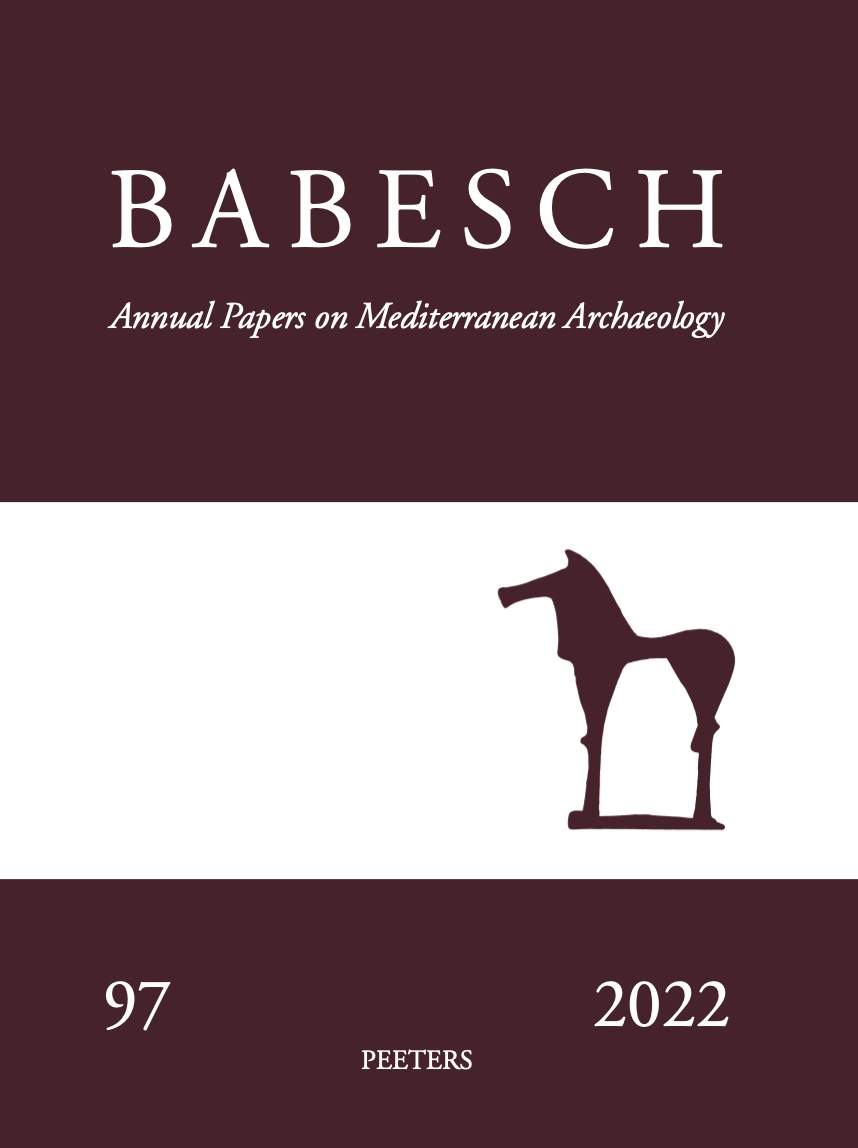 previous article in this issue previous article in this issue | next article in this issue  |

Preview first page |
Document Details : Title: Siti costieri ed attività produttive nella Cirenaica tardoantica Author(s): ARENA, Gaetano Journal: BABESCH Volume: 86 Date: 2011 Pages: 167-184 DOI: 10.2143/BAB.86.0.2128098 Abstract : The results of an archaeological dig carried out in 2008 in two Libyan coastal sites, Al Hamamah and El Ogla, together with a study of equally precious literary testimonies (Pseudo-Scylax, Strabo, Ptolemy, Stadiasmus Maris Magni, Itinerarium Antonini, Tabula Peutingeriana, Synesius of Cyrene), enable to identify modern El Ogla with ancient Ausigda. These data document the particular vivacity, rather than the decline, of the Cyrenaic coastal settlements in Late Antiquity and lead us to believe that the reworked products of the catch (fish sauce and salted fish, but also highly valued purple cloth), especially of tuna fishing, were not only destined for local consumption and use but were important either for trade and commerce with other Mediterranean areas - being, therefore, vital for the regional economy - or for enrichment opportunities and social mobility of local middle class, like in the case of Andronikos who, from simple thynnoskopos (‘assigned to sighting the tuna’), became the praeses Lybiae Superioris in AD 411. These reflections on the productive activities of Cyrenaic coastal sites have been confirmed by the particular curvilinear shape of El Ogla’s bay. The site in fact lies on an eminence above a sheltered cove, protected at the north-east side by a low promontory and in the north-west by a second short promontory and an island; on the beach there are two circular vats and remains of some harbour infrastructures. These vats, considered ‘storage tanks’ by Jones and Little, very probably should be regarded as basins for the preparation of fish sauce and salted fish (garum and salsamenta), both products highly valued during the Roman Imperial period. From Hellenism to Late Antiquity, the catch of crustaceans, molluscs and a great variety of fish (Plautus, Athenaeus, Synesius), among which the valuable tuna was surely practised along the North African and particularly Libyan coasts. The testimonies on the piscatio thynnaria (in a passage of the jurist Ulpian on a fundus maritimus in Byzacena) and on the particular strategy to capture tuna fish - which did not use the modern ‘death room’ in the open sea but achieved the tuna massacre directly on the beach (Oppianus Anazarbensis and Aelianus), and the processing of haul into ‘enormous recipients’ (ingentes lacus, as writes Manilius) - confirm either the natural ‘predisposition’ of El Ogla’s concave bay to the encirclement of the tuna with fishing nets, or the use of the vats on the beach for fish-salting and garum production, circular structures very similar to others of 3rd century AD found at Berenike, Taucheira, Ptolemais and Apollonia. |
|


